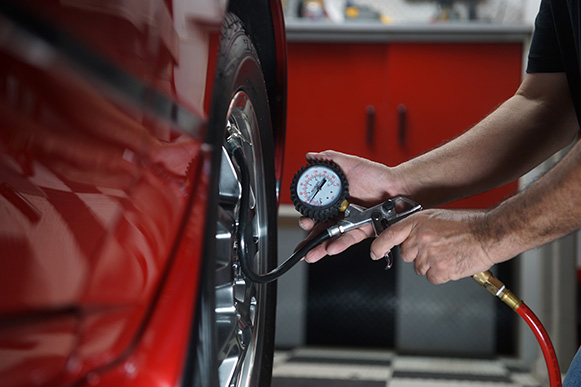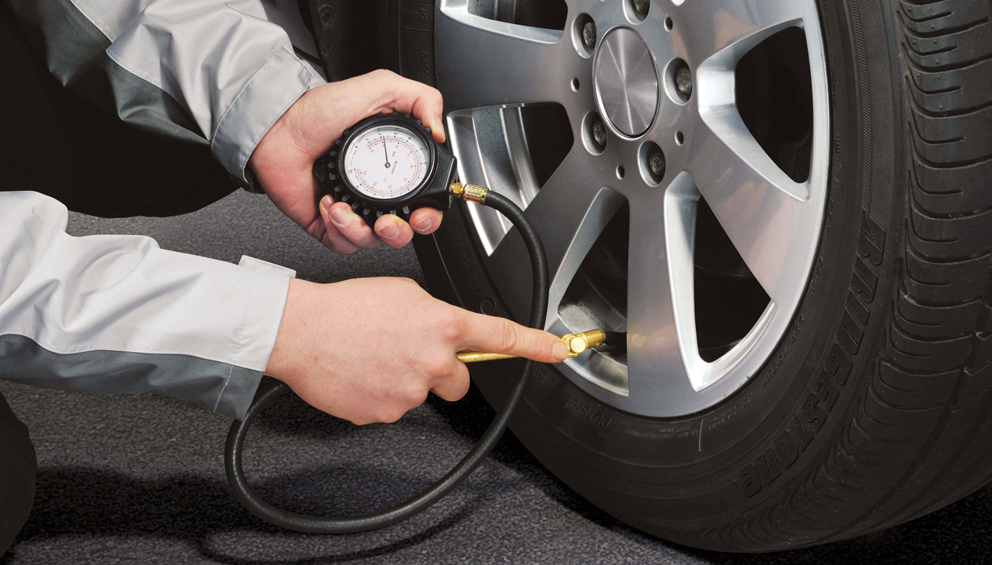Pressure is defined as a force exerted on a surface per unit area. To put it more simply, it’s the force that is put on a certain defined area.
It’s likely you’ll be familiar with the concept in everyday life – for example ‘feeling the pressure’ or ‘applying pressure to a wound’, but when it comes to pressure and tyres, it can be difficult to understand the measurements of pressure, and know where to find them, which is why we’re going to take you through it. There are three commonly used measurements of pressure in tyres – PSI, BAR and kPa, and depending on your vehicle, you may need to convert from one to another.
Your tyre inflation pressure depends on the amount of air that has been pumped into your tyre. It is measured in pounds per square inch (psi), bar or kPa. Your vehicle manufacturer recommends the suitable pressure for your tyres.
PSI is the most common means of measuring tyre pressure in countries that use the imperial system. This includes the USA and UK. PSI stands for ‘pound-force per square inch’ and is an imperial unit of pressure based on avoirdupois units. It is defined as the pressure that results when a force of one pound-force is applied to a one-square-inch area. One psi is approximately 6,895 pascals (N/m2). It can measure everything from blood pressure to tyre pressure.
You will most likely need to convert from BAR or kPa to PSI if you live in a country that uses the imperial system and purchase a car from a country that uses the metric system.
BAR is a metric unit and is most commonly used in weather forecasting to measure atmospheric pressure. I BAR is equal to 14.50 pounds per square inch and is another method used to determine air pressure in tyres, particularly in countries that use the metric system. It is considered a less reliable and less scientific means of measuring pressure than kPa.
The bar and millibar were introduced by the Norwegian meteorologist Vilhelm Bjerknes who founded the modern practice of weather forecasting. The term “bar” comes from the Greek word “baros,” which means weight.
The term “bar” comes from the Greek word “baros,” which means weight.
The kPa is a metric unit equal to 1000 Pascals, which take their name from a French scientist called Blaise Pascal, who worked to measure the strength needed in hydraulic systems. As pascals are a relatively small unit, mostly used to measure low pressure environments, tyre pressures are more commonly measured in kPa (kilopascals)
The pascal (Pa) or kilopascal ( kPa ) as a unit of pressure measurement is widely used throughout the world, particularly in countries which follow the metric system. (most of Europe) and in some industries is largely replacing the pounds per square inch (psi) unit. 1 kPa is equal to 0.145038 PSI.
Either kPa, PSI or Bar can be used to measure tyre pressure, and this often depends on where in the world the tyres are manufactured and whether that part of the world uses the metric and imperial system. This can prove tricky for vehicle owners, and even professional, so if you need to make a conversion, here are the formulae you will need:
Converting from BAR to PSI
For an approximate result, multiply the pressure value by 14. 504
504
Converting from PSI to kPa
For an approximate result, divide the pressure value by 6.895
| PSI | BAR | KPA |
| 1 | 0.068 | 6.8 |
| 2 | 0.13 | 13 |
| 3 | 0.2 | 20 |
| 4 | 0.27 | 27 |
| 5 | 0.34 | 34 |
| 6 | 0.41 | 41 |
| 7 | 0.48 | 48 |
| 8 | 0.55 | 55 |
| 9 | 0.62 | 62 |
| 10 | 0.68 | 68 |
| 11 | 0.75 | 75 |
| 12 | 0.82 | 82 |
| 13 | 0.89 | 89 |
| 14 | 0.96 | 96 |
| 15 | 1.03 | 103 |
| 16 | 1. 1 1 | 110 |
| 17 | 1.17 | 117 |
| 18 | 1.24 | 124 |
| 19 | 1.31 | 131 |
| 20 | 1.37 | 137 |
| PSI | BAR | KPA |
| 21 | 1.44 | 144 |
| 22 | 1.51 | 151 |
| 23 | 1.58 | 158 |
| 24 | 1.65 | 165 |
| 25 | 1.72 | 172 |
| 26 | 1.79 | 179 |
| 27 | 1.86 | 186 |
| 28 | 1.93 | 193 |
| 29 | 1.99 | 199 |
| 30 | 2.06 | 206 |
| 31 | 2. 13 13 | 213 |
| 32 | 2.2 | 220 |
| 33 | 2.27 | 227 |
| 34 | 2.34 | 234 |
| 35 | 2.41 | 241 |
| 36 | 2.48 | 248 |
| 37 | 2.55 | 255 |
| 38 | 2.62 | 262 |
| 39 | 2.68 | 268 |
| 40 | 2.75 | 275 |
| PSI | BAR | KPA |
| 41 | 2.82 | 282 |
| 42 | 2.89 | 289 |
| 43 | 2.96 | 296 |
| 44 | 3.03 | 303 |
| 45 | 3.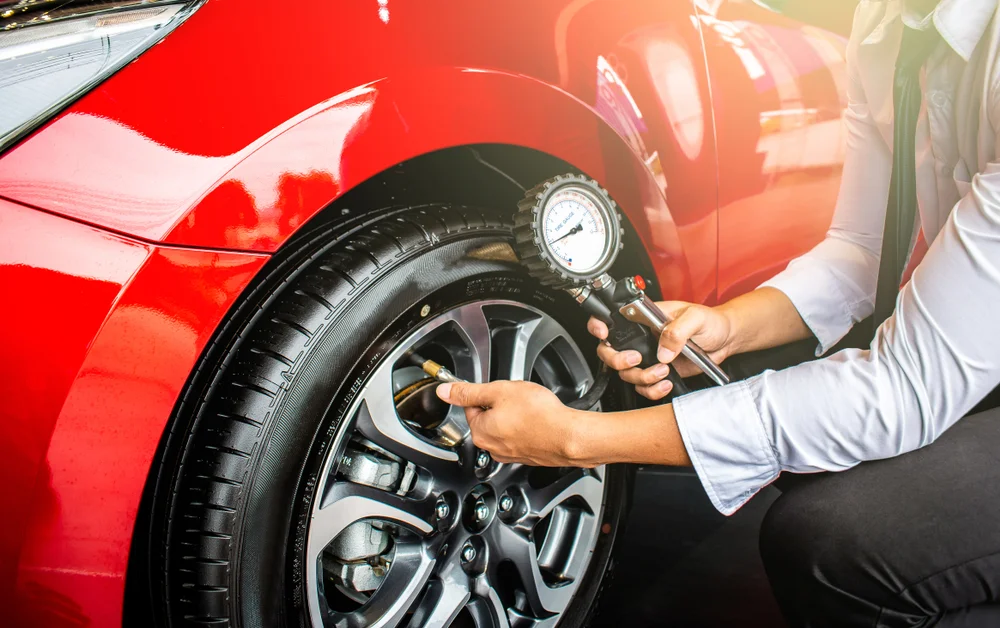 1 1 | 310 |
| 46 | 3.17 | 317 |
| 47 | 3.24 | 324 |
| 48 | 3.3 | 330 |
| 49 | 3.37 | 337 |
| 50 | 3.44 | 344 |
| 51 | 3.51 | 351 |
| 52 | 3.58 | 358 |
| 53 | 3.65 | 365 |
| 54 | 3.72 | 372 |
| 55 | 3.79 | 379 |
| 56 | 3.86 | 386 |
| 57 | 3.93 | 393 |
| 58 | 3.99 | 399 |
| 59 | 4.06 | 406 |
| 60 | 4.13 | 413 |
| PSI | BAR | KPA |
| 61 | 4.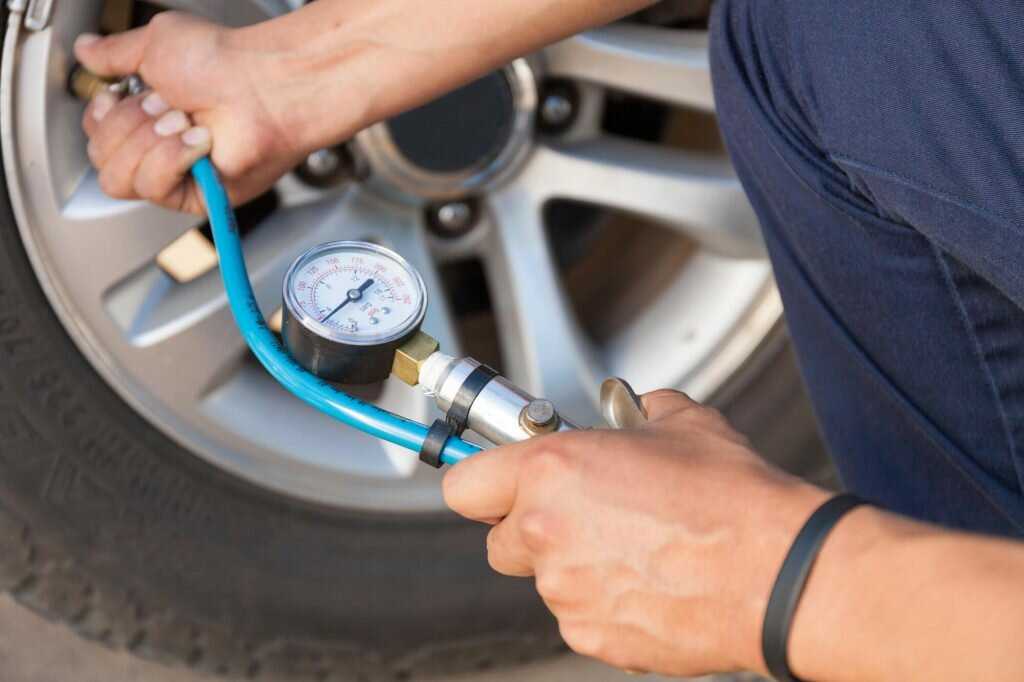 2 2 | 420 |
| 62 | 4.27 | 427 |
| 63 | 4.34 | 434 |
| 64 | 4.41 | 441 |
| 65 | 4.48 | 448 |
| 66 | 4.55 | 455 |
| 67 | 4.61 | 461 |
| 68 | 4.68 | 468 |
| 69 | 4.75 | 475 |
| 70 | 4.82 | 482 |
| 71 | 4.89 | 489 |
| 72 | 4.96 | 496 |
| 73 | 5.03 | 503 |
| 74 | 5.1 | 510 |
| 75 | 5.17 | 517 |
| 76 | 5.24 | 524 |
| 77 | 5.3 | 530 |
| 78 | 5.37 | 537 |
| 79 | 5. 44 44 | 544 |
| 80 | 5.51 | 551 |
| PSI | BAR | KPA |
| 81 | 5.58 | 558 |
| 82 | 5.65 | 565 |
| 83 | 5.72 | 572 |
| 84 | 5.79 | 579 |
| 85 | 5.86 | 586 |
| 86 | 5.92 | 592 |
| 87 | 5.99 | 599 |
| 88 | 6.06 | 606 |
| 89 | 6.13 | 613 |
| 90 | 6.2 | 620 |
| 91 | 6.27 | 627 |
| 92 | 6.34 | 634 |
| 93 | 6.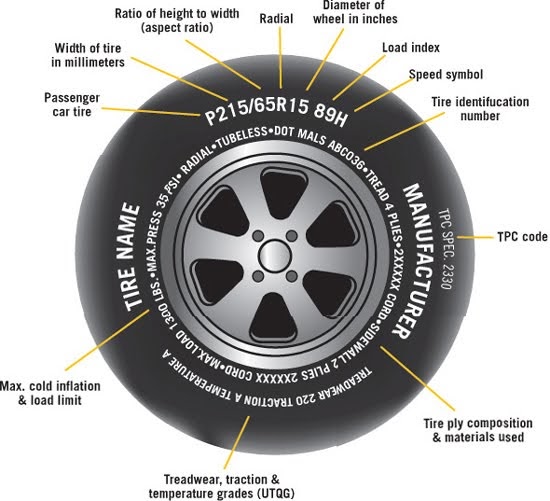 41 41 | 641 |
| 94 | 6.48 | 648 |
| 95 | 6.55 | 655 |
| 96 | 6.61 | 661 |
| 97 | 6.68 | 668 |
| 98 | 6.75 | 675 |
| 99 | 6.82 | 682 |
| 100 | 6.89 | 689 |
First, you need to find the recommended pressures for the tyres. These can be found in several places:
Your vehicle’s handbook
Stamped into the sill of the driver’s side door
Inside the fuel cap
The recommended pressure is set by the vehicle manufacturer and varies from model to model.
You can also use our handy tyre pressure look up tool here: https://www.tyresafe.org/car-tyre-pressure/
Do be aware that there are different pressures for different vehicle loads – the more passengers or luggage, the higher the pressure will need to be.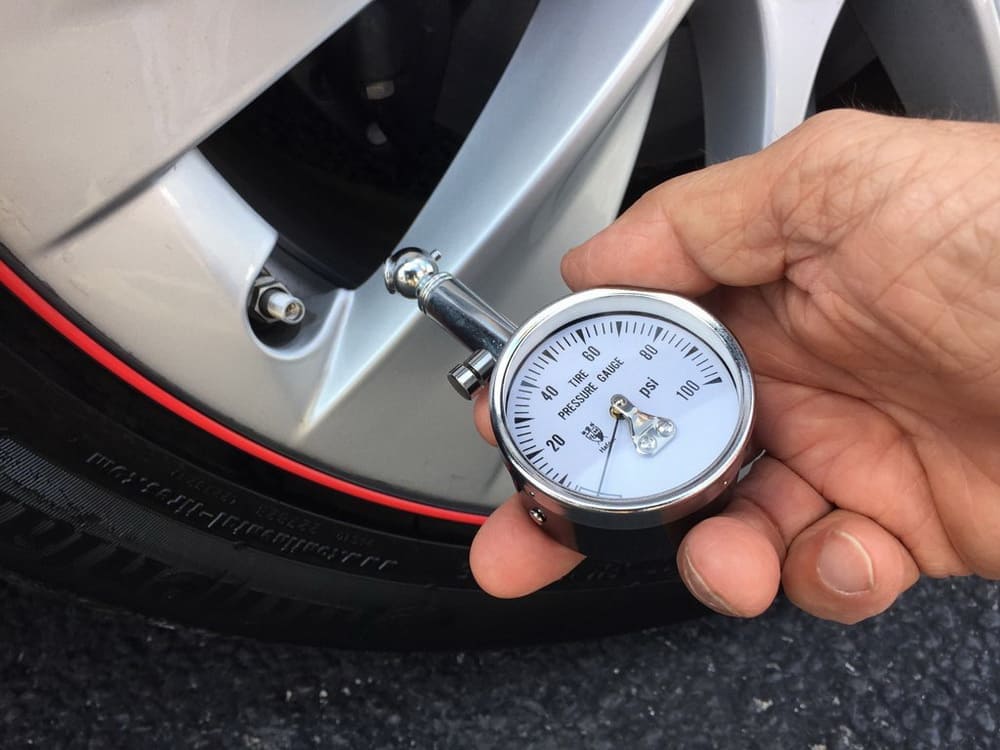
From a safety and cost standpoint, tire maintenance is one of the most important things you can do for your car. The easiest way to care for your tires is both quick and inexpensive: maintain the correct tire pressure.
The recommended pressure for tires varies by the type of car and tire. Because maintaining your tires is so crucial to your safety and your car’s overall performance, it’s important to know what tire pressure is correct for your vehicle.
To learn what your tire pressure should be, look for your manufacturer’s recommendation, which is printed on a label inside your car. Depending on the vehicle, this label may be on the edge of the vehicle’s door, on the doorpost or in the glove box. The label will usually give recommendations for the front and rear tires as well as the spare, and it’s important that you stick to those guidelines. Even after you’ve replaced your tires, the same pressure guidelines on your car’s label apply to new tires of the same size.
Even after you’ve replaced your tires, the same pressure guidelines on your car’s label apply to new tires of the same size.
Pressure recommendations are based on readings taken from a tire pressure gauge. Check the pressure first thing in the morning or wait at least three hours after driving; this provides sufficient time for them to cool back down.1
Driving on underinflated tires is one of the biggest causes of tire failure, according to the National Highway Traffic Safety Administration. And not having enough air in your tires can lead to other problems. Under-inflated tires wear out more rapidly, handle poorly and reduce fuel efficiency. On the other hand, overinflated tires are more susceptible to damage from road irregularities, and they also result in a bumpier ride. Overfilling your tires is just as dangerous as underfilling them, so it’s important you know what is recommended for your vehicle.
Knowing how to check tire pressure is critical to your safety and to keeping your tires in good working order.
When it comes to choosing a gauge, you typically have 3 options:
Put the pressure gauge into the valve stem, making sure the gauge is evenly and firmly pressed onto the stem. If you’re using a pen-style gauge, read the number on the rod that pops out of the sleeve. Read dial pressure gauges as you would a watch with one hand. With a digital pressure gauge, simply read the number on the screen. 2
Find your tires’ recommended PSI in the owner’s manual or on a sticker just inside the driver’s side door.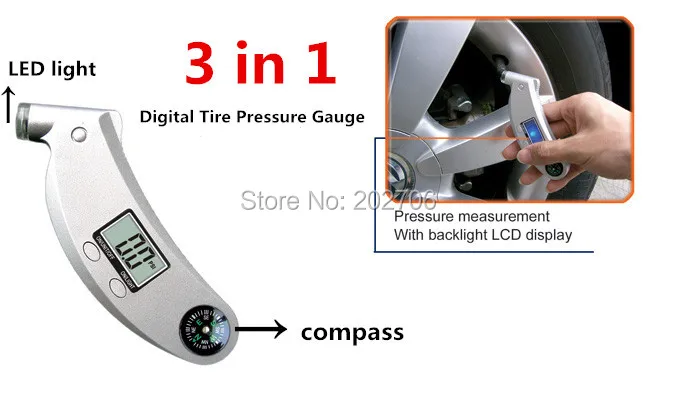 The proper PSI is crucial to your safety and the car’s longevity. Underinflated tires can overheat and wear unevenly; overinflated tires can blow out.1
The proper PSI is crucial to your safety and the car’s longevity. Underinflated tires can overheat and wear unevenly; overinflated tires can blow out.1
Temperature has a direct effect on your air tires’ air pressure, so for an accurate PSI reading, make sure to check tire pressure when tires are cold. If it’s cold outside, then you can assume your tires are losing PSI and you should check even more frequently. This will help to ensure maximum safety. Take your car to a mechanic you trust for a professional assessment.3
If you happen to find yourself without a tire gauge and your car doesn’t have an indicator for low tire pressure, there are several things you can do to figure out whether your tires need to be inflated.
 Do you see any flattening? If your answer is yes, then your tires probably need more air.
Do you see any flattening? If your answer is yes, then your tires probably need more air.Of course, knowing your recommended PSI isn’t enough. You have to ensure you’re checking your tires regularly. Experts recommend you check air pressure once a month.5 Your car’s tire pressure monitoring system TPMS measures the amount of air in your tires to let you know whether your tires are properly inflated.1
Frequently checking your PSI becomes even more important in the fall and winter, when outside temperatures drop and weather conditions fluctuate causing your tires to lose air more quickly. Generally, your tire will gain or lose 1 PSI for every 10-degree change in temperature, which means if you have a sudden drop of 30 degrees, you could lose 3 PSI overnight. If your tires were already low, this could cause tire damage, steering problems or even a flat tire.3
Generally, your tire will gain or lose 1 PSI for every 10-degree change in temperature, which means if you have a sudden drop of 30 degrees, you could lose 3 PSI overnight. If your tires were already low, this could cause tire damage, steering problems or even a flat tire.3
Knowing and maintaining the right air pressure is important to the safety and longevity of your tires. All it takes is a tire pressure gauge and a few minutes of your time.
Once you have the right tire pressure, make sure you also have the right coverage. Learn more about how Nationwide auto insurance can help protect you and save you money.
Sources:
1 https://www.pirelli.com/tires/en-us/car/driving-and-tire-tips/how-to-read/recommended-tire-pressure, Accessed April 2022.
2 https://www.consumerreports.org/cro/tire-pressure-gauges/buying-guide/index.htm#:~:text=There%20are%20three%20types%20of,of%205%20to%2099%20psi., Accessed April 2022.
3 https://www.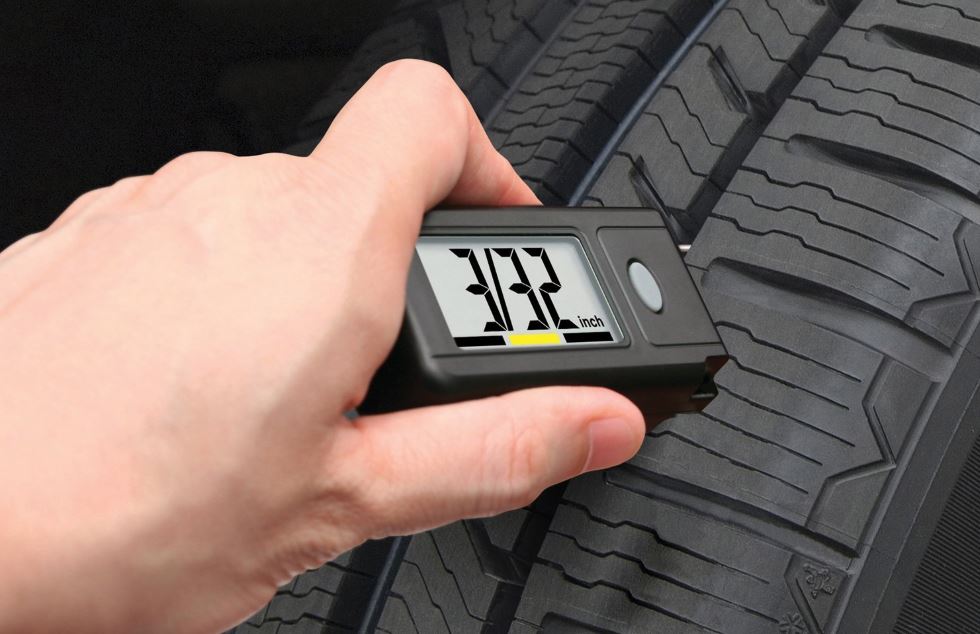 firestonecompleteautocare.com/blog/tires/should-i-inflate-tires-cold-weather/, Accessed April 2022.
firestonecompleteautocare.com/blog/tires/should-i-inflate-tires-cold-weather/, Accessed April 2022.
4 https://rxmechanic.com/how-to-check-tire-pressure-without-gauge/, Accessed February 2022.
Tire pressure significantly affects driving parameters: comfort, car handling, economy and safety. It is important to maintain the pressure recommended by the manufacturer and check it regularly. Let's figure out how to do it right.
When driving on asphalt, incorrect tire pressure (both high and low) leads to a decrease in the contact patch with the road. An overinflated wheel clings to the surface only in the central part, which leads to its rapid wear. A poorly inflated tire, on the contrary, "sits" on the sidewalls, leaning on the shoulder areas of the tread and pushing the central part inward. Here's what it looks like:
Both under-inflation and over-inflation in tires create many problems for the driver.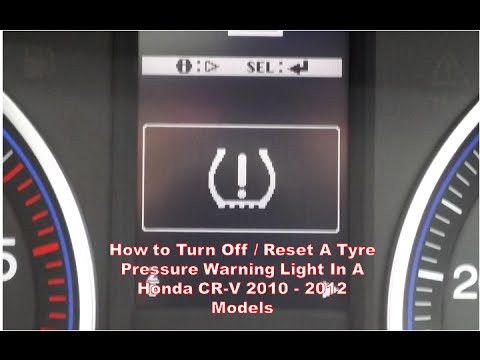
1. Increased wear of the central part of the tire tread.
2. Reduced ride comfort, hardness of potholes and road bumps.
3. Increased load on the car's suspension due to reduced tire damping effect.
4. Risk of tire damage and herniation due to shock loading (getting into a pit or pothole). nine0013 5. Reduced control stability due to reduced contact patch.
1. Increased wear of the tread sidewalls (shoulder areas).
2. Severe deformation of the rubber when driving over bumps, which increases the risk of tire damage.
3. An increase in tire temperature, which threatens to delamination of the carcass and can lead to tire explosion at high speed.
4. Increased risk of hydroplaning on wet roads.
5. Risk of tire breaking. nine0013 6. Increased fuel consumption.
Reduced pressure hits the driver's pocket hard: a pressure drop of 20% (which is not uncommon: it is enough, for example, to deflate the wheels to 1. 8 atmospheres instead of the manufacturer's prescribed 2.2) reduces tire life by 25-30% and increases fuel consumption fuel by 3%.
8 atmospheres instead of the manufacturer's prescribed 2.2) reduces tire life by 25-30% and increases fuel consumption fuel by 3%.
There is no universal tire pressure: it depends on the size of the tires, the characteristics of the car (primarily weight) and road conditions. Therefore, it is important to follow the factory recommendations, maintaining exactly the tire pressure that the engineers expected when designing the car. nine0003
The recommended pressure for your machine can be found in the operating instructions and on the sticker in the door frame. If, depending on the configuration, tires of several dimensions were installed on the car, then the pressure recommended for them may differ - look in the table for your exact wheel size. The manufacturer may prescribe an increase in tire pressure at the maximum load of the machine. For the spare tire (Spare tire), the required pressure is also indicated on a separate line - note that it is much higher than the standard one.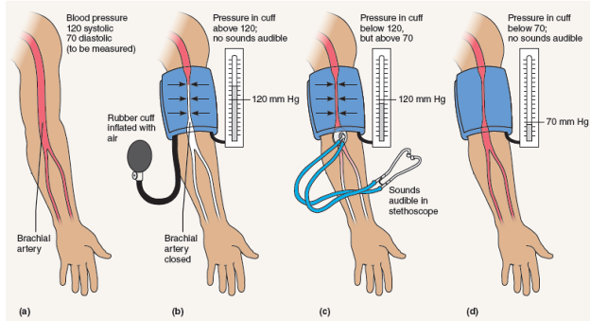 nine0003
nine0003
So, you have found the necessary pressure parameters, it remains to decipher them. In physics, pressure is measured in pascals, in real life - in anything: in bars, atmospheres, pounds-force, kilogram-force ... Drivers and tire workers usually use the term atmosphere, but such a unit is often absent on pressure gauges (pressure measuring devices) . Let's clear up this confusion.
Atmosphere is a non-systemic unit of measurement, approximately equal to atmospheric pressure on the surface of the Earth. Since it has become widely used, it was necessary to somehow equate it with correct physical units. For simplicity, one atmosphere is considered equal to one bar, one kilogram-force and one hundred kilopascals. nine0003
In addition to the technical atmosphere (at), there is also the physical atmosphere (atm), which is slightly larger. Again, for convenience, they are considered equal. But all these assumptions introduce an error, so if you need accurate tire pressure, measure it correctly - in pascals or bars.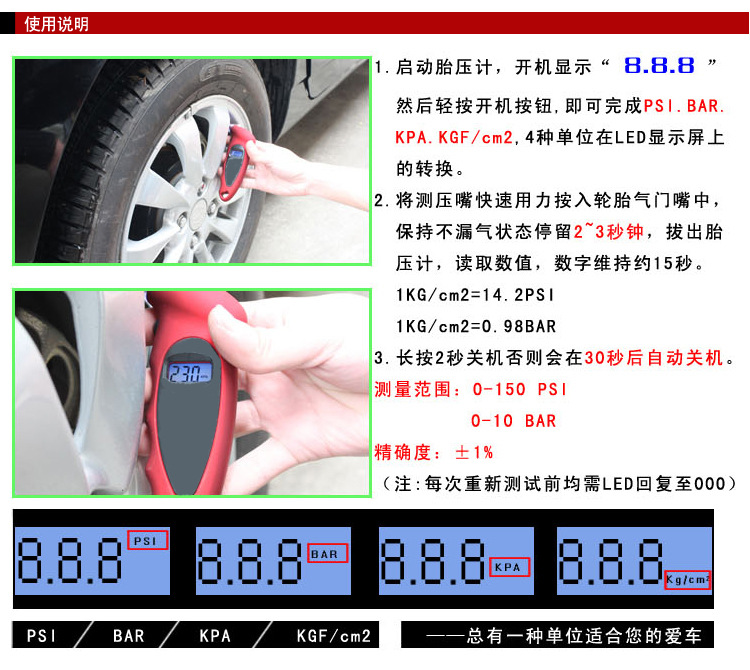 Moreover, manufacturers usually indicate the pressure in these quantities.
Moreover, manufacturers usually indicate the pressure in these quantities.
Imperial pounds-force (aka PSI, “psy”), popular in the USA, is more difficult to translate, here you can’t do without a calculator. In the table, we have collected together all pressure units with exact values, and also approximately brought them to each other to simplify calculations:
| Pressure units | |||||
| Pascal | Bar | Technical atmosphere | Physical atmosphere | PSI | |
| 1 Pa | 1 N/m² | 10-5 | 10. | 9.8692•10-6 | 145.04•10-6 |
| 1 bar | 105 | 1x106 dynes/cm² | 1.0197 | nine0060 14.504 | |
| 1 at | 98066.5 | 0.980665 | 1 kgf/cm² | 0.96784 | 14.223 |
| 1 bar | 101325 | 1.01325 | 1.033 | 1 bar | 14. |
| 1psi | 6894.76 | 68.948•10-3 | 70.307•10-3 | 68.046•10-3 | 1lbf/in² |
It is advisable to check tire pressure daily, before driving. But this is only possible with a very measured rhythm of life. In reality, checking at least once a month is already an excellent indicator for the average driver. But before traveling a long distance, checking the pressure and visual inspection of tires and rims should be done in any case. nine0003
It is necessary to measure the pressure in cold tires, that is, before driving. During driving, the tires heat up, which increases the pressure by about 10%. Therefore, never release supposedly excess air from hot tires: after cooling, the pressure will be below normal.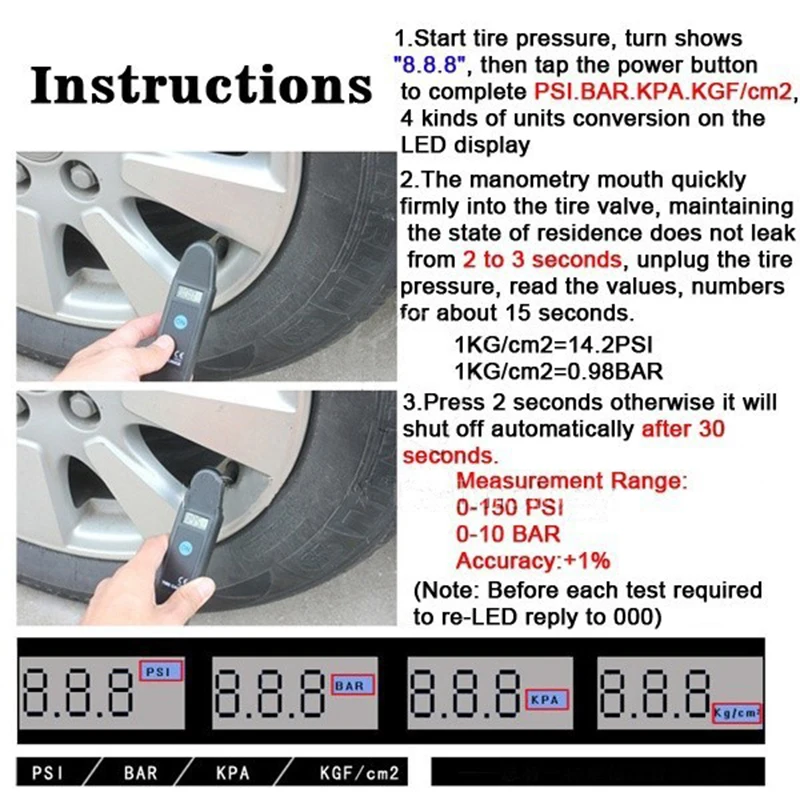 If you had to inflate a hot tire during a trip, inflate it 10% more than the nominal value, and check the pressure again when the wheels have cooled down - no earlier than 3 hours after stopping.
If you had to inflate a hot tire during a trip, inflate it 10% more than the nominal value, and check the pressure again when the wheels have cooled down - no earlier than 3 hours after stopping.
Always check the pressure in all tires. Different tire pressures seriously affect handling and can cause the car to pull to the side. Do not forget about the "spare tire": it should always be inflated in case of an unexpected wheel change on the road. nine0003
For long-term driving at high speeds (more than 160 km/h), car manufacturers advise increasing tire pressure by 0.2-0.4 bar from the recommended value. This will slightly improve the handling of the car, although it will negatively affect comfort. But such advice is relevant for driving on high-speed autobahns, and not for everyday urban use, especially in Russia.
Before a long trip on a dirt road or a road with a muddy surface (mud, snow), it is reasonable, on the contrary, to reduce the pressure in the tires - this will improve the grip.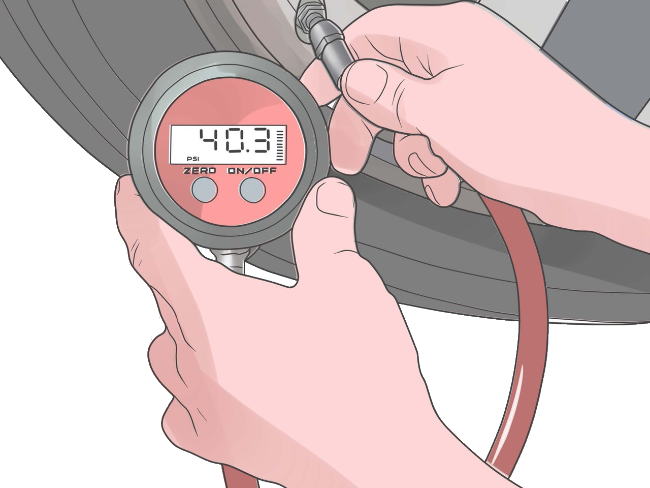 In summer, it is worth limiting yourself to reducing pressure by 5-10% of the nominal value, and in winter - by 10-15%. nine0003
In summer, it is worth limiting yourself to reducing pressure by 5-10% of the nominal value, and in winter - by 10-15%. nine0003
The pressure in low-profile tires (especially non-standard sizes) must be monitored especially carefully. Low profile tires have two features: a low sidewall (profile) height and a large rim diameter. If the tire has the correct air pressure, only the tread is in contact with the road. Low pressure causes the sidewall of the tire to bend, causing it to touch the roadway and wear out quickly, up to complete abrasion. And punching a low-profile tire in a pit at low pressure is much easier. nine0003
When inflating low profile tires, you need to focus on the pressure indicated for a full load of the machine and the maximum allowable pressure for a particular tire. It is indicated on the sidewall, next to the inscription max pressure, in one of the accepted units of measurement: kilopascals (KPA), bars (BAR) or pounds-force (PSI).
Modern cars equipped with sensors in tires and a TPMS (Tire pressure monitoring system) pressure monitoring system themselves monitor the pressure in each wheel and signal deviations, which is very convenient. If there is no such system in the car from the factory, you can install it yourself. nine0003
But the old manual measurement methods are still in use. Firstly, any modern car compressor is equipped with a pressure gauge: by inflating the wheel, you immediately control the pressure.
Secondly, there are compact hand-held pressure gauges: no need to unpack and connect the pump to check the pressure, and the measurement accuracy of such a pressure gauge is usually higher than that of a built-in compressor instrument. There are also modern digital pressure gauges on sale that allow you to switch pressure units on the fly and save readings in memory, which is very convenient. nine0003
Finally, if you want to entrust all maintenance of the car to professionals, you can use the services of tire fitting.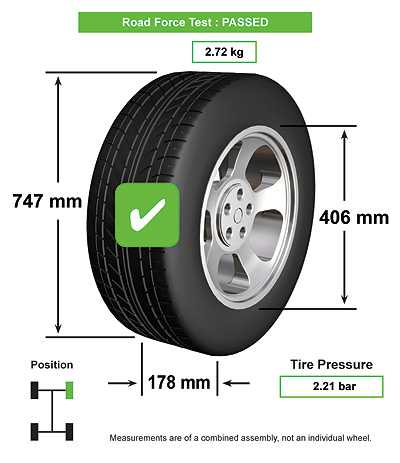 In Hyperauto car services equipped with tire fitting areas, experienced mechanics will accurately measure and correct tire pressure, assess the condition of the tire tread and perform any other work with the wheels.
In Hyperauto car services equipped with tire fitting areas, experienced mechanics will accurately measure and correct tire pressure, assess the condition of the tire tread and perform any other work with the wheels.
Optimum pressure will provide protection from accidents. If there is too little air, the tires will not be able to withstand the stress of cornering and hard braking. nine0003
Then the stability of the car decreases when driving, the reliability of the tires decreases ... If attention is not paid to maintaining the correct pressure, the tire may burst on the move, which will lead to an accident.
Too much air in the tire is also a negative indicator. High pressure leads to an increase in the load on the chassis of the car. The result is uneven tire wear, the impossibility of normal driving in a straight line, the deterioration of dynamic performance and too long braking distances. nine0003
| Article content:
|
First you need to find out the characteristics recommended by the car manufacturer.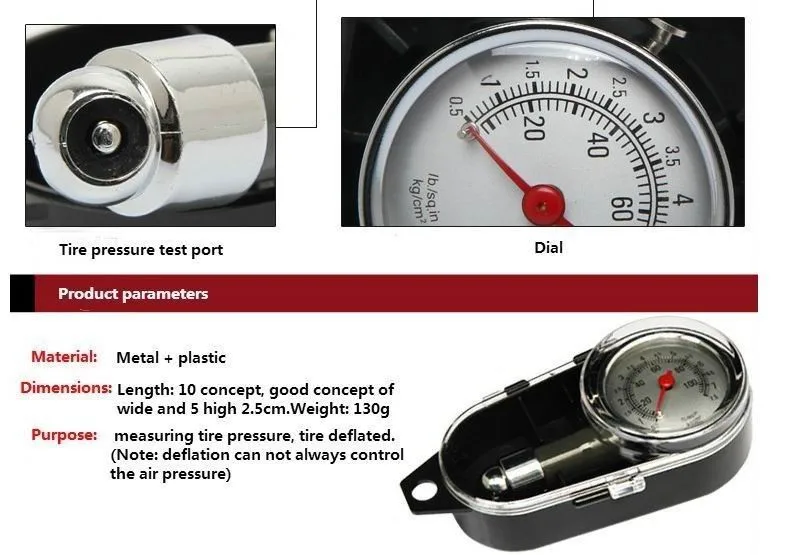 Information about them is indicated in the accompanying documents, the instruction manual, the gas tank hatch, the glove box or on the inside of the driver's door. It usually lists the lowest possible value in PSI (pound force per square inch) or bar. The figures vary depending on the dimensions and weight of the vehicle:
Information about them is indicated in the accompanying documents, the instruction manual, the gas tank hatch, the glove box or on the inside of the driver's door. It usually lists the lowest possible value in PSI (pound force per square inch) or bar. The figures vary depending on the dimensions and weight of the vehicle:
In some cars, the front and rear wheels require different pressure. Information about this should be indicated in the documentation.
The most understandable unit of measure for us is bar, it is in these units that the pressure of wheel inflation devices at gas stations is indicated. But such a system for measuring tire pressure is not accepted in all countries, therefore, there is another standard calculated in PSI, which often confuses car owners whose recommended pressure is indicated in these units.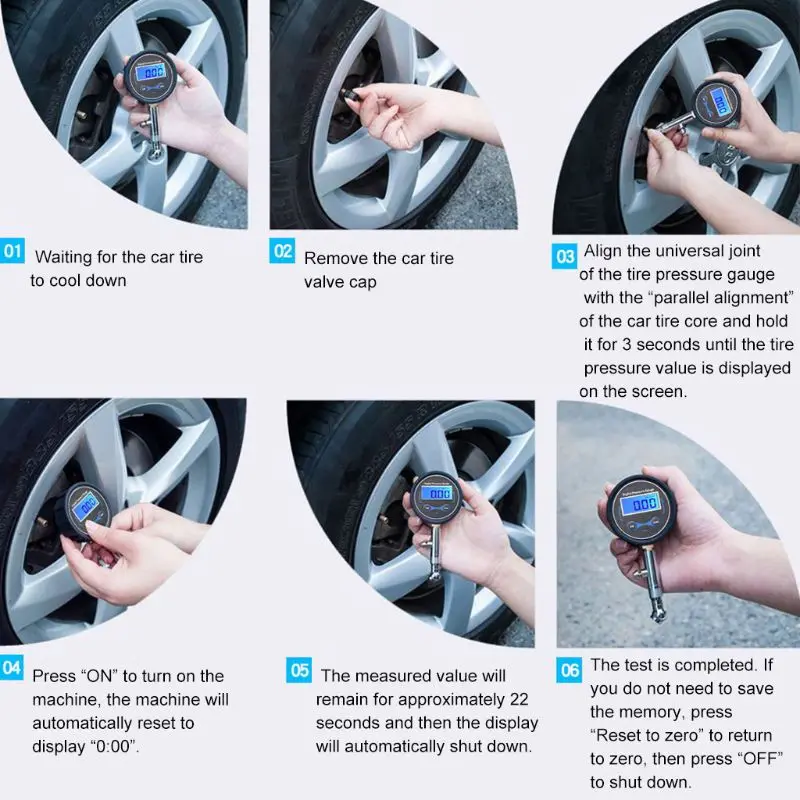 nine0003
nine0003
PSI (or lbs) is pounds per square inch, and to get the pressure value in technical atmospheres, PSI must be divided by 14.5. By the way, on bicycle tires, the pressure is indicated in PSI.
So:
1 bar = 100 kPa ≈ 1 kgf/cm² ≈ 14.5 psi
1 PSI (lbs) ≈ 7 kPa, or 0.07 kgf/cm² - standard pressure for most passenger sedans.
• Low profile tire pressure.
If your vehicle is fitted with non-standard low-profile tires, the tire pressure must be monitored with particular care. Low profile tires have two features: a low sidewall height and a large rim diameter. nine0003
If the tire has the correct air pressure, only the tread is in contact with the road. Low pressure causes distortion of the sidewall of the tire, as a result of which it begins to touch the roadway, gradually wearing out. At a certain point, the tire wears out completely, and it collapses. If this happens at high speed, the consequences can be fatal.
“For low profile tires, use the pressure specified for the maximum load on the vehicle and refer to the maximum allowable air pressure in the tire, which is indicated on the sidewall of the tire with the inscription MAX PRESSURE in kilopascals and pounds per square inch.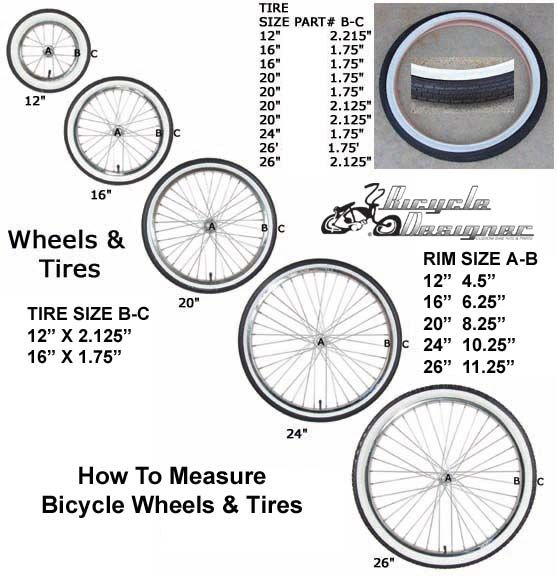 For example, MAX PRESSURE 3.0 kps (44 psi)." nine0003
For example, MAX PRESSURE 3.0 kps (44 psi)." nine0003
You will need a pressure gauge to measure. There are several types of such devices.
 According to them, the driver can timely control the values of pressure and temperature. Sensors can be both external and internal. nine0013 The disadvantage is the significant high cost for an ordinary motorist and the external attractiveness of the caps, which provides not only interested looks, but also the possibility of easy “loss” with the help of deft hands of others who spotted a car in an unguarded parking lot. External sensors are also unstable to the environment and often break, for example, from aggressive driving or stones in them.
According to them, the driver can timely control the values of pressure and temperature. Sensors can be both external and internal. nine0013 The disadvantage is the significant high cost for an ordinary motorist and the external attractiveness of the caps, which provides not only interested looks, but also the possibility of easy “loss” with the help of deft hands of others who spotted a car in an unguarded parking lot. External sensors are also unstable to the environment and often break, for example, from aggressive driving or stones in them.
It is advisable to do this every time you intend to use the vehicle. If this is not possible, pay attention to the process at least once a week. Measurement has its own characteristics.
